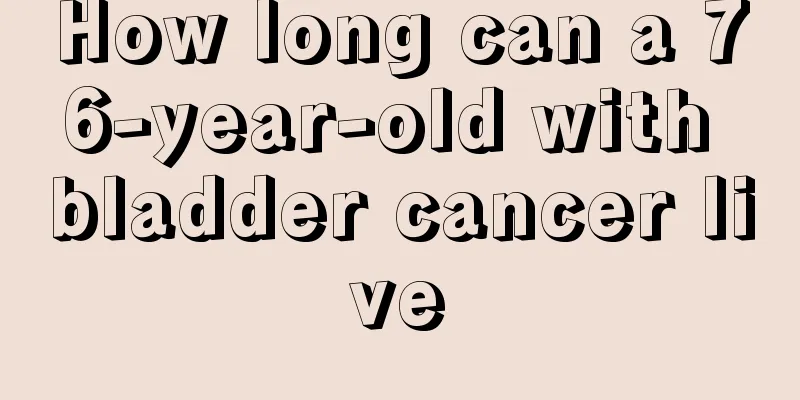Cerebrospinal fluid mononuclear cell increase

|
Cerebrospinal fluid mononuclear cell increase is a common symptom in clinical medicine, which is generally a manifestation of tuberculous meningitis. Tuberculous meningitis is a relatively serious brain disease and needs to be treated properly during the onset period, otherwise it will affect the patient's brain health and overall health. Next, I will introduce to you the treatment methods of tuberculous meningitis. 1. General treatment (1) Nursing: Depending on the condition, the patient should stay in bed for about 6 months. If the patient is conscious, he or she can move the lower limbs appropriately while lying flat on the bed to prevent thrombosis. Patients who are in coma or have incontinence can be catheterized, fed through the nose, and turned over regularly to prevent pressure sores. (2) Supportive therapy: Provide high-nutrition, easily digestible diet to correct water and battery imbalance, metabolic disorders, etc. The daily infusion volume should not be too much, and the intake and output should be kept basically balanced. (3) Symptomatic treatment: Patients with high intracranial pressure (intracranial pressure greater than 200 mmH2O) can be given 20% mannitol by rapid intravenous injection every 6 or 8 hours. If necessary, glycerol fructose can be used in combination to reduce intracranial pressure. Acetazolamide can be given at the same time, 3 times a day, to reduce the production of cerebrospinal fluid. For patients with persistent high intracranial pressure that cannot be relieved, in addition to oral prednisone, dexamethasone can be injected intravenously once a day (for 5 to 7 days) and/or spinal injection therapy can be given 2 to 3 times a week (slowly drain cerebrospinal fluid and slowly inject isoniazid and dexamethasone into the spinal canal). 2. Systemic treatment (1) For patients who have just received treatment, HREZS is given for an intensive phase of 3 months and HREZ chemotherapy is continued for more than 9 months. The dose of isoniazid can be increased to once a day, and prednisone is given once a day (the dose can be reduced after the condition stabilizes. The total course of treatment is preferably 3 months). The total course of anti-tuberculosis treatment is 12 to 18 months. (2) For retreatment or relapse patients, sensitive drugs should be selected based on previous medication history and drug sensitivity tests. For patients who are estimated to be resistant to first-line drugs, a regimen of isoniazid, prothionamide, levofloxacin, sodium para-aminosalicylate or pyrazinamide, and amikacin (intravenous injection for 3 months) can generally be selected, with intrathecal injection added if necessary. The total course of treatment is more than 18 months. The above regimen should pay attention to monitoring liver and kidney function, blood uric acid, blood and urine routine tests, etc. 3. Intrathecal injection (1) Indications: ① Patients with refractory high intracranial pressure. ② Those with significantly increased cerebrospinal fluid protein quantity. ③ Meningitis with early spinal canal infarction. ④ More serious cases, accompanied by coma. ⑤ Abnormal liver function, resulting in discontinuation of some anti-tuberculosis drugs. ⑥ Those with chronic, recurrent or drug-resistant disease. (2) Drugs and treatment courses: Generally, a mixture of isoniazid and dexamethasone is injected slowly into the spinal canal (if the patient has adverse reactions during the injection, the injection will be stopped), 2 to 3 times a week. The total course of treatment depends on the patient's condition. After improvement, the number of doses per week is gradually reduced until it is completely reduced. 4. Treatment of hydrocephalus (1) Ventricular puncture and catheter drainage When the intracranial pressure is very high, ventricular puncture and catheter drainage can be performed in the early stage. (2) Ventricular shunt surgery: For patients with chronic hydrocephalus who have not responded to long-term treatment, ventricular shunt surgery may be considered. 5. Experimental treatment When the patient's condition is serious, accompanied by impaired consciousness, and has not been diagnosed with tuberculous encephalitis, but the possibility of tuberculous encephalitis is suspected based on clinical experience and the patient's symptoms and signs, anti-tuberculosis experimental treatment can be given as soon as possible and examinations can be carried out at the same time. |
<<: Will drinking milk cause kidney stones?
>>: The drug of choice for sinus tachycardia
Recommend
Analysis of the causes of melanoma
Melanoma is a common skin tumor and a malignant d...
How to use rosemary essential oil
Rosemary essential oil may be consumed by few peo...
Is finger pricking accurate for measuring blood sugar?
Most young people generally do not need to measur...
Can dandelion really cure liver cancer? Revealing how to eat dandelion to treat liver cancer
Speaking of dandelions, many people may know that...
Uses of paraffin
Speaking of paraffin, I believe many of my friend...
Which part of the hand should be massaged for cervical pain
The best way to relieve cervical pain is through ...
What factors can cause gastric cancer?
Gastric cancer is a common oncology disease in my...
How long can you live with early ovarian cancer
How long can patients with early-stage ovarian ca...
Which stage does stomach cancer metastasis belong to?
The spread of gastric cancer is also called metas...
What are the advantages and disadvantages of non-rosewood furniture?
The so-called non-rosewood actually refers to Afr...
What color clothes should I wear if my skin is yellowish
Clothes make the man, and saddles make the horse....
Can cupping reduce internal heat?
Getting angry has always been a common problem th...
Why does moldy food cause liver cancer? Liver cancer patients should not eat too much of these foods
Many middle-aged people are about 40 years old. T...
Prevention and treatment of bacterial angular spot of cucumber
Bacterial angular leaf spot of cucumber is the mo...
The psychology of sleeping with your back to someone
Even if you are not a psychology major, you shoul...









